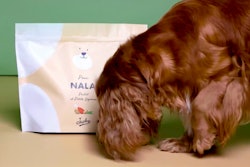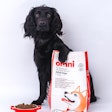
Petfoodindustry.com publishes press releases from companies involved in global dog, cat and other pet food markets, free of charge. Not every press release we receive gets posted, but here is how your company can submit copy for consideration.
- Go to this webpage: https://www.wattglobalmedia.com/contact-us/
- Select “Editorial Team – Petfood Industry” under the “Where do you want to send your request?” dropdown menu.
- Fill out the rest of the fields.
- Paste the press release text into the Message field. You’ll need to write out urls, since hyperlinks are not supported.
Alternatively, you can email press releases directly to Petfood Industry’s editors or reporter. Our emails are no longer listed on the webpage for digital security reasons. If you are not a robot, you can probably figure out that my name is T. Wall, no period or space, and I work @ Watt Global [Media], a commercial company.
Once we receive your press release, our editorial staff will decide if the subject seems appropriate for our readers. For example, a press release about a new facility construction would be selected for publication, whereas one about a new cat food formulation would be used for Petfood Industry’s Pet Food Product Database.
Writing a press release for Petfoodindustry.com
Once accepted, your press release text will be edited to match our style. Petfood Industry largely follows “Associated Press Stylebook” guidelines. For those without access to the latest edition, Purdue University provides an overview. How much of the press release survives the editing process, along with whether that press release gets included in a newsletter, depends on several factors.
Writing a press release as if it were journalism may sway those factors in favor of publication and promotion. Fundamental journalism, as opposed to blogs, advertisements or editorials, seeks to present an objective observation of a particular topic or event. While various styles, from yellow to Gonzo to live Tweets, have blurred the lines between reporter and subject, journalists generally try to avoid influencing what they write about. However, much like Heisenberg’s uncertainty principle, the very act of observing changes that which the reporter covers. Since truly empirical examination may be impossible, journalists try to include multiple viewpoints and sources. Like guessing the number of jelly beans in a jar, one person will be inaccurate, while a group’s average hits close to the mark.
Press release writers can incorporate this by avoiding hyperbole and puffery. Is your pet food company really the first brand to use natural, wholesome, local, GMO-free, human-grade, high protein, grain-free ingredients that wolves would love? Save that for the advertisements. In a press release, tell your readers the important information and let them decide if it’s the latest and greatest.
Fundamentals of journalism and press release writing
To determine the most important information, answer a few questions. Who, what, when, where, why and how? Those questions have many variations depending on the situation. Who did it? Who was affected? What did they do? What happened? When did it occur? When will it affect people? Where did it occur? Where will the effects be felt? Why did it happen? Why are people concerned? How will it influence other events? How did past events influence this one?
Press release writers can answer these questions using a basic form of journalistic writing called the inverted pyramid. In inverted pyramid reporting, the most important information is presented first. The first sentence takes precedence and often also serves as the lead or lede, which summarizes vital information. Burying the lead means failing at the inverted pyramid and hiding that sentence after other writing. This can work in some forms of journalism by creating a soft lead that entices readers to continue by presenting only a glimpse of the main topic, such as an illustrative anecdote. However, for press releases, the copy writer needs to get their point across quickly or risk being passed over.
The inverted pyramid helps ensure a strong lead by placing as many of the five W’s in the first sentence or two as possible. Those first sentences often form a nut graf, a paragraph that summarizes the whole article. The nut graf often answers who, what, when and where. Why and how tend to be the questions used to fill out the article and provide context and breadth.
By following these guidelines, pet food industry professionals can help ensure that their company’s voice is heard on Petfoodindustry.com.



















